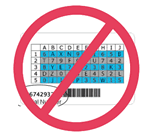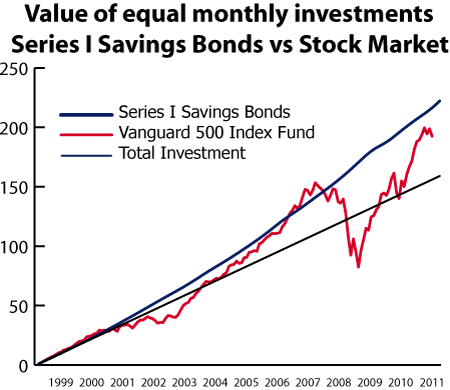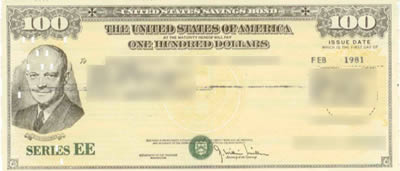 The Treasury announced today 1/4 that the annual purchase limit for electronic U.S. savings bonds bought at TreasuryDirect is now $10,000 per series, per person. I’m not sure why they waited so long to decide this, given that it’s been six months since they announced that they would will no longer sell paper U.S. savings bonds through banks and other financial institutions in 2012. Thanks to reader JR for the heads up.
The Treasury announced today 1/4 that the annual purchase limit for electronic U.S. savings bonds bought at TreasuryDirect is now $10,000 per series, per person. I’m not sure why they waited so long to decide this, given that it’s been six months since they announced that they would will no longer sell paper U.S. savings bonds through banks and other financial institutions in 2012. Thanks to reader JR for the heads up.
Under the new rules, an individual can buy a maximum of $10,000 worth of electronic savings bonds of each series in a single calendar year, or a total of $20,000. Since 2008, investors could buy a maximum of $5,000 in each series and in each form (paper or electronic). So a single owner could buy $20,000 in one year. As of January 1, 2012, paper bonds are no longer being sold through financial institutions. With today’s announcement, the total amount an individual can purchase in online savings bonds in one calendar year is $20,000. An investor still can purchase up to $5,000 annually in Series I paper savings bonds using his/her tax refund and IRS Form 8888.
This also means that you could theoretically buy $10,000 electronically and $5,000 in paper bonds in 2012. However, another weird glitch on IRS Form 8888 [pdf] is per the directions, the total amount bought on that form cannot exceed $5,000 – whether you file single or married filing jointly. So a married filing joint couple can only buy $5k between the both of them, while two single filers can get $5k each. Boo.
The Finance Buff has a nice post about what he calls the backdoor to paper savings bonds regarding overpaying your taxes on purpose. Basically, you do your taxes, then file an extension with payment included in order to make sure you have a $5k refund amount, and shortly afterward file your taxes. Supposedly tax software like TurboTax supports Form 8888, so it’s not even necessary to file using paper forms.


 Here’s a reminder regarding an opportunity to buy savings bonds near the end of May and receive an annualized return of 2.51% over the next 11 months. This would be 1% more than the highest current CD rates, with potential for continued higher interest. See
Here’s a reminder regarding an opportunity to buy savings bonds near the end of May and receive an annualized return of 2.51% over the next 11 months. This would be 1% more than the highest current CD rates, with potential for continued higher interest. See 
 The Best Credit Card Bonus Offers – March 2024
The Best Credit Card Bonus Offers – March 2024 Big List of Free Stocks from Brokerage Apps
Big List of Free Stocks from Brokerage Apps Best Interest Rates on Cash - March 2024
Best Interest Rates on Cash - March 2024 Free Credit Scores x 3 + Free Credit Monitoring
Free Credit Scores x 3 + Free Credit Monitoring Best No Fee 0% APR Balance Transfer Offers
Best No Fee 0% APR Balance Transfer Offers Little-Known Cellular Data Plans That Can Save Big Money
Little-Known Cellular Data Plans That Can Save Big Money How To Haggle Your Cable or Direct TV Bill
How To Haggle Your Cable or Direct TV Bill Big List of Free Consumer Data Reports (Credit, Rent, Work)
Big List of Free Consumer Data Reports (Credit, Rent, Work)